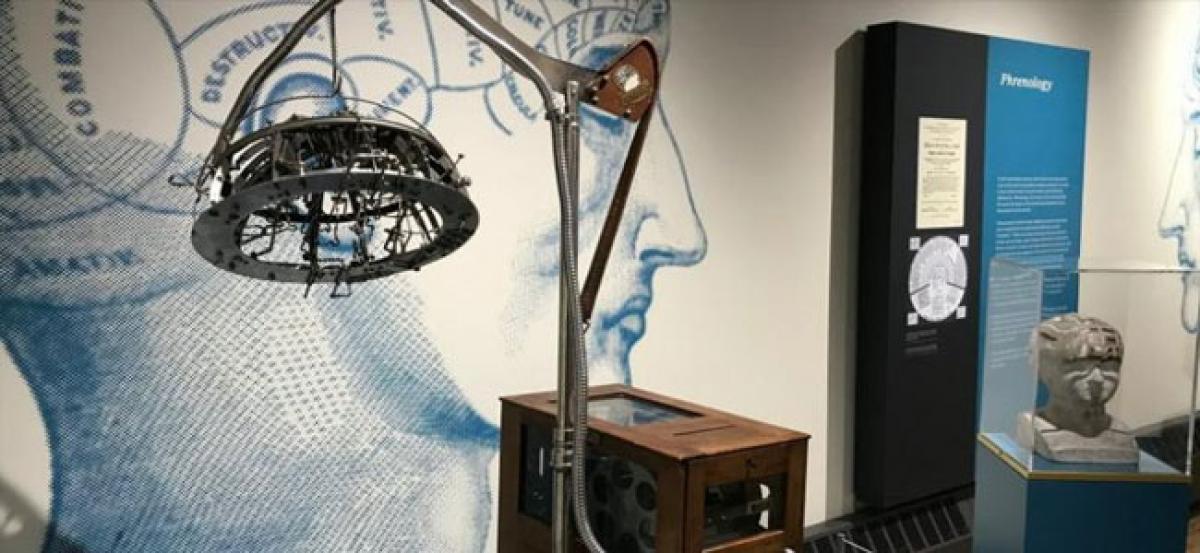Psychology museum explores what makes us human

Wonder Womans striking visage on large, bright screens just inside the new National Museum of Psychology tells visitors theres more here than dusty books and esoteric curiosities
The world’s most famous female superhero gets a place of distinction because she was created by a psychologist.
AKRON, Ohio: Wonder Woman’s striking visage on large, bright screens just inside the new National Museum of Psychology tells visitors there’s more here than dusty books and esoteric curiosities.
The world’s most famous female superhero gets a place of distinction because she was created by a psychologist, William Moulton Marston, as a symbol of what he saw as the emerging power of women in the 1940s. Once past Wonder Woman, the 8,500-square-foot museum on the edge of the University of Akron’s downtown campus takes a deep dive into the study of why people do what they do. The technical stuff — treatment of mental illness, the rise of talk therapy, etc. — is keenly balanced with the kind of interactive exhibits that are a requirement for any modern family museum.
Dennis Barrie, who developed it with his wife, Kathleen, already knew what it took to get people in the front door of a museum. He was co-creator of Cleveland’s Rock and Roll Hall of Fame and a former executive director there. In recent years he worked on the International Spy Museum in Washington and the Mob Museum in Las Vegas. He acknowledged the challenges in making psychology palatable to a mass audience.
“When I first met the team there and looked at their archives, which are extensive and for most of us probably too sophisticated in terms of knowledge and background, I did have those concerns,” Barrie said. But the subject matter also gave him plenty of options. “There were things in everything we did that were indicators of a bigger story but allowed you to have fun and participate in the process,” he said.
Visitors can put together a puzzle that was used as an intelligence test — known in the early 20th century as a “moron test” — to assess the intellect of immigrants arriving in the U.S. They can measure their reaction time against that of legendary slugger Babe Ruth. They can test their ability to multitask.
Displays tell the stories of how psychology has been used in everything from workplace efficiency to determining the level of caffeine in Coca-Cola and marketing handguns to women. “Psychology is literally everywhere in our world, and applied everywhere,” Barrie said. “It’s not just lying on a couch a la Freud, talking about your childhood memories.”
Speaking of Sigmund Freud, there is a replica of the Vienna office where he pioneered psychoanalysis, along with some of his letters and rare home movies. Oddities include a medieval-looking skullcap from the 19th century that measured the bumps on a person’s head to determine intellectual traits. (Like many early psychological theories, that process, called phrenology, was later proved to be worthless.)
One of the most macabre items is a wooden cage known as a Utica Crib that was used in 19th-century asylums to keep patients from leaving their beds. Displayed nearby are gleaming medical picks that belonged to Dr. Walter J. Freeman, a physician who specialized in lobotomies and botched the procedure on Rosemary Kennedy, the sister of President John F. Kennedy.
Barrie’s favorite exhibit includes memorabilia from the 1971 “Stanford prison experiment.” The famous social psychology exercise involved breaking groups of students into guards and inmates in a mock prison scenario and claimed to show that each group adapted to its role in dramatic ways. The museum’s overarching theme is examining what makes us human. “We hope,” coordinator Dorothy Gruich said, “that people will come in and learn a little bit about themselves.”




















